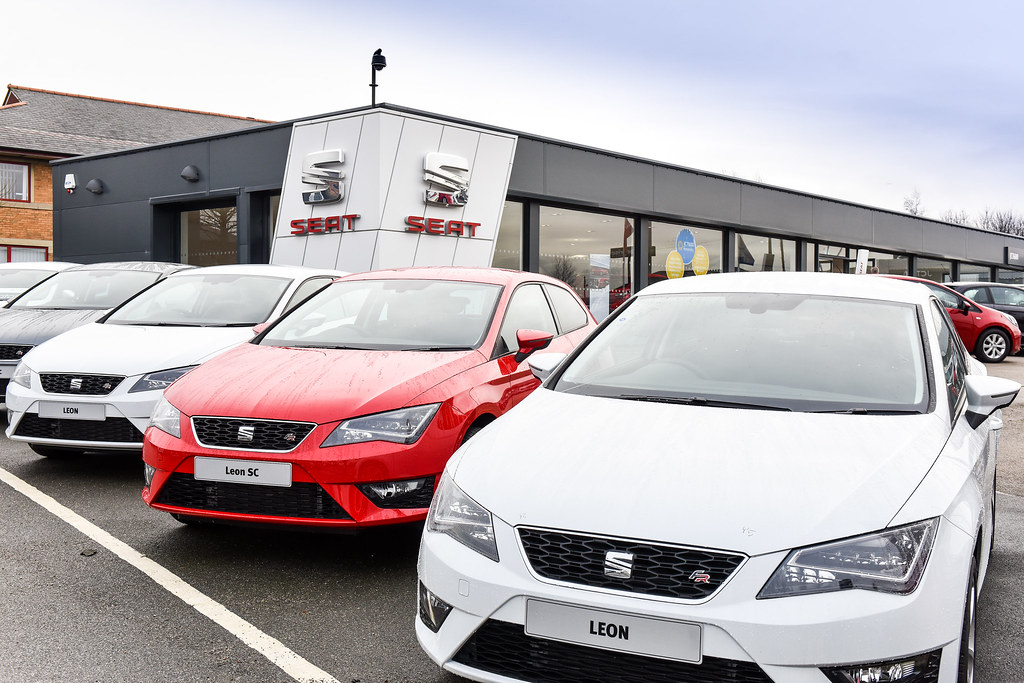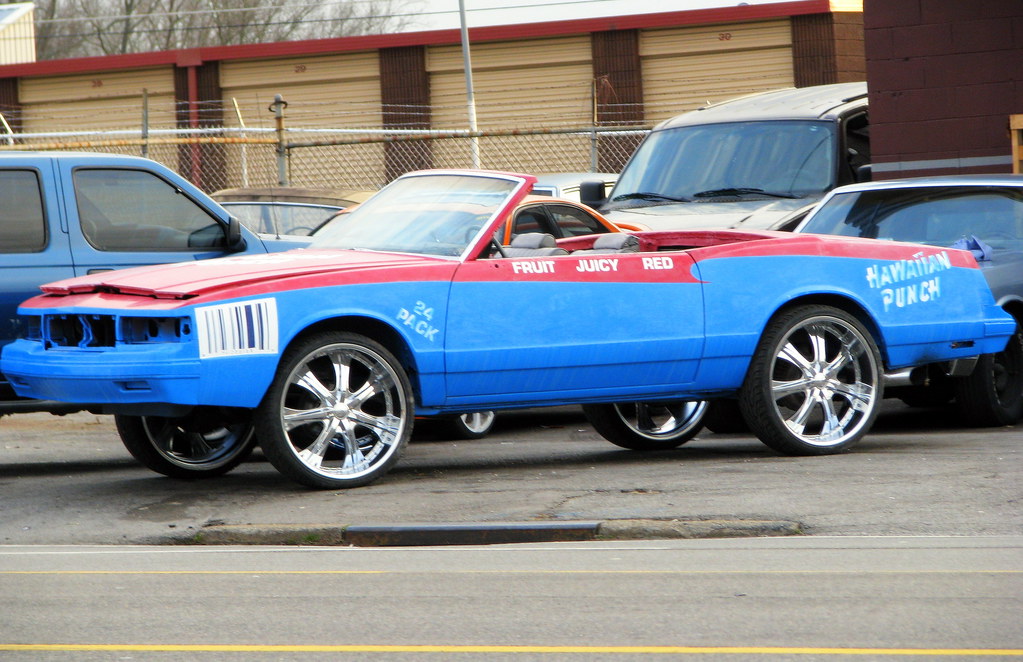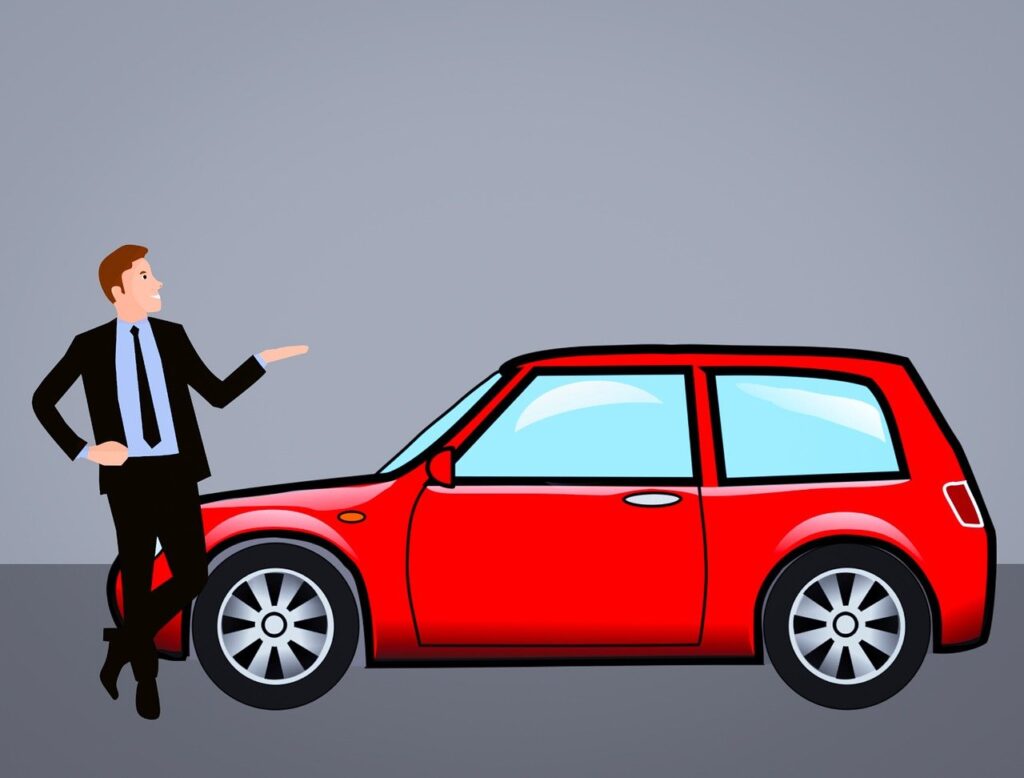
For many, the allure of a used car is undeniable. In an era where new vehicle prices soar, with Kelley Blue Book reporting an average transaction price of a steep $38,393, turning to the used market often seems like the only sensible choice. Indeed, nearly 70 percent of U.S. consumers are contemplating a used car, truck, or SUV for their next purchase. The good news is that a wave of late-model vehicles coming off lease means reasonable prices and a plentiful selection are currently flooding the market.
However, beneath the surface of an attractive sticker price lies a complex reality: the true cost of ownership. While a used car might initially appear to be a bargain, it can quickly transform into a financial burden if you’re not careful. The experts at CarMD.com highlight this in their annual Vehicle Health Index, which compiles repair data from over 14.4 million vehicles to pinpoint which models are least likely to suffer problems and which are cheapest to fix. But what about the other side of the coin – those vehicles that promise luxury or performance, only to deliver a never-ending stream of expensive repairs?
This in-depth guide is designed to arm used-vehicle shoppers with the knowledge to make more informed choices, helping you avoid costly pitfalls. We’ll delve into the often-overlooked financial realities of owning certain pre-owned vehicles, exploring why some cars keep repair bills low and mileage costs manageable, while others demand significant ongoing investment. By understanding the strengths and weaknesses of various models and categories, you can identify vehicles that offer the best balance of affordability, reliability, and driving enjoyment, ensuring your next used car doesn’t turn into a source of regret.

1. **Luxury and Performance-Oriented Used Vehicles**When considering a used car, the initial temptation might be to gravitate towards luxury or performance-oriented models. These vehicles, often from esteemed brands like BMW, Audi, Land Rover, Mercedes-Benz, and Mini, are beloved for their style, advanced technology, power, and comfort. They promise an elevated driving experience that can seem incredibly appealing, especially when their used market prices drop significantly from their original high-end tags. This depreciation can make them appear like an incredible deal, offering a slice of premium motoring for a fraction of the cost.
However, as the saying goes, if something seems too good to be true, it probably is. The very attributes that make these vehicles desirable—advanced technology, sophisticated engineering, and powerful engines—are precisely what make them so expensive to maintain in the long run. These cars are built with complexity in mind, incorporating numerous sensors, specialized components, and intricate systems that are costly to repair or replace when they eventually fail, which they inevitably do with age and mileage.
The challenges of maintaining these vehicles are compounded by several factors. Firstly, their parts are typically far more expensive than those for mass-market cars, often costing two to three times more. Secondly, the labor involved in diagnosing and fixing issues is often higher due to the complex designs and the need for specialized tools and expertise. Many repairs require dealership-grade equipment and highly trained technicians, limiting options for independent service and driving up labor rates.
Furthermore, these vehicles often require premium fluids, specific tire types, and more frequent, specialized maintenance schedules. This means that even routine upkeep can quickly become a significant expense. When key components inevitably fail, what seemed like a bargain can quickly transform into an expensive headache, turning the dream of luxury ownership into a financial burden that can overshadow any initial savings. Buyers lured in by the initial luxury charm often find themselves facing repair bills that can rival, or even exceed, the car’s depreciated value.
Read more about: Rock ‘N’ Roll on Wheels: 14 Iconic Musicians and the Classic Rides That Define Them
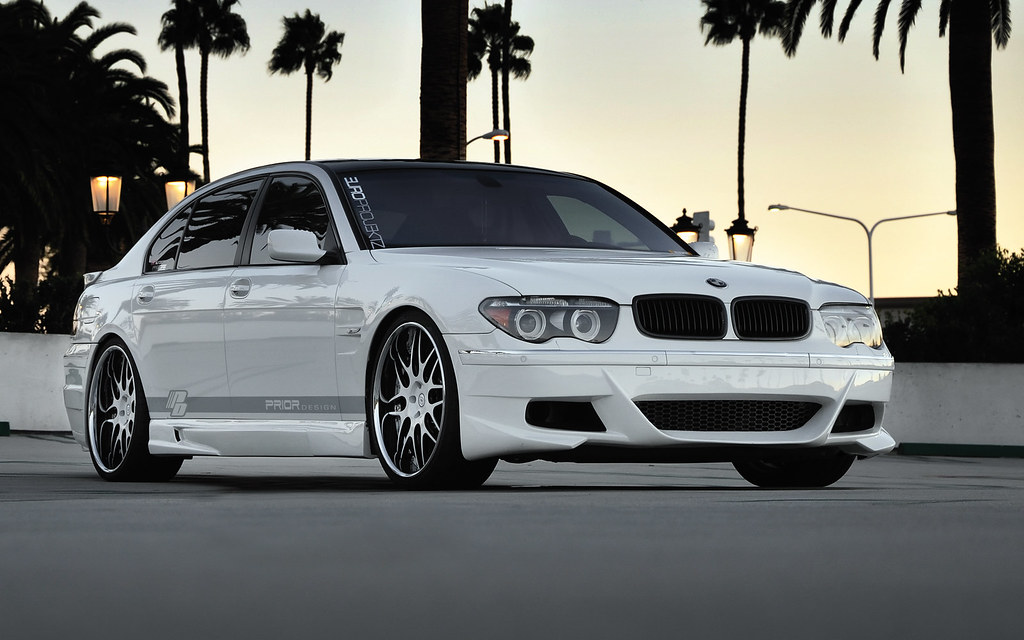
2. **BMW 5 Series**The BMW 5 Series stands as a testament to luxury, performance, and engineering sophistication, delivering an unparalleled driving experience. However, beneath its polished exterior and dynamic performance lies a notorious reputation for high repair bills once these vehicles transition into the used market. What might seem like a steal for a 5- to 7-year-old model can quickly evolve into a significant financial drain, as the long-term costs often far outstrip any initial purchase savings. This model is consistently flagged for its ongoing maintenance requirements and parts that command a premium price..
One of the most significant financial risks associated with the used BMW 5 Series stems from its complex engine and drivetrain. Many 5 Series variants are equipped with turbocharged engines, which, while providing exhilarating power, introduce a host of potential issues as they age. Common problems include higher-than-average oil consumption, premature timing chain wear, and turbocharger failures. Each of these can lead to repairs that easily cost anywhere from $2,000 to $6,000, quickly eating into a budget. Even seemingly minor issues, such as an oil leak, can escalate into multi-thousand-dollar repair jobs due to the engine’s tight packaging and the elevated labor rates associated with BMW service.
Beyond mechanical issues, the advanced electronics are another major pain point for older 5 Series models. These vehicles are laden with intricate sensors, numerous control modules, and sophisticated computerized systems that manage everything from dynamic stability control to adaptive headlights and gesture control interfaces. As these cars accumulate mileage and age, electrical gremlins are a frequent occurrence. Diagnosing the precise root cause of these issues can demand hours of highly skilled labor. Furthermore, many electronic problems necessitate dealership-grade diagnostic equipment to properly fix, effectively locking owners into higher repair shop rates and limiting the availability of more affordable, independent service options.
The suspension system, particularly in higher trims featuring adaptive dampers or air suspension, adds yet another layer of potential expense. Replacing shock absorbers is not only costly, potentially exceeding $1,500 per corner in some configurations, but often requires replacement in pairs to maintain ride quality and handling integrity. Additionally, components such as front control arms, various bushings, and ball joints tend to wear out more rapidly due to the vehicle’s substantial weight and its performance-oriented tuning. This accelerated wear translates directly into more frequent and costly suspension work over the ownership period.
Hidden operational costs also contribute to the 5 Series’s notorious expense profile. The car typically demands premium-grade gasoline, and its fuel economy, while decent for its class, is only moderate compared to non-luxury alternatives. These factors, combined with requirements for frequent and expensive tire replacements (due to the vehicle’s weight and performance-oriented tires), higher-cost specialized fluids, and significantly higher insurance premiums, mean the car is expensive to operate even when it is in peak condition. If previous owners have deferred maintenance, these costs can compound exponentially, making the ownership experience even more prohibitive.
Depreciation, paradoxically, plays a complex role here. While the rapid initial depreciation makes a used 5 Series seem affordable to purchase, it can also mean that owners end up spending more on repairs than the car is actually worth within a few years of ownership. Many find themselves in the unenviable position of having to decide whether to invest thousands into a car that has plummeted in market value or to cut their losses and sell it. For these reasons, the BMW 5 Series often becomes a classic trap for unsuspecting buyers drawn in by its initial luxury appeal, only to be hit with an endless stream of budget-busting repairs.
Car Model Information: 2013 GMC Sierra 1500 SLT
Name: BMW 5 Series
Manufacturer: BMW
Production: 1972–present
Class: Executive car
BodyStyle: Sedan (automobile)
Layout: Front-engine, rear-wheel-drive,Front-engine, all-wheel-drive
Predecessor: BMW New Class
Categories: 1980s cars, 1990s cars, 2000s cars, 2010s cars, 2020s cars
Summary: The BMW 5 Series is an executive car manufactured and marketed by BMW since 1972. It is the successor to the BMW New Class sedans and is currently in its eighth generation. The car is sold as either a sedan or, since 1991, a station wagon (marketed as “Touring”). A 5-door fastback (marketed as “Gran Turismo”) was sold between 2009 and 2017. Each successive generation has been given an internal G-code designation since 2017. Previously, a F-code designation was used between 2010 and 2016, while an E-code designation was used between 1972 and 2010. These are used to distinguish each model and generation from each other.
The first generation of the 5 Series was powered by naturally aspirated four-cylinder and six-cylinder petrol engines. Following generations have been powered by four-cylinder, six-cylinder, V8 and V10 engines that are either naturally aspirated or turbocharged. Since 1982, diesel engines have been included in the 5 Series range.
The 5 Series is BMW’s second-best-selling model after the 3 Series. On 29 January 2008, the 5 millionth 5 Series was manufactured, a 530d sedan in Carbon Black Metallic. It is BMW’s oldest nameplate still in production and the first model line to use “Series” in the name, debuting the three-digit model naming convention still used today. Since the E28, all generations of 5 Series have included an “M” model, called the BMW M5.
Get more information about: BMW 5 Series
Buying a high-performing used car >>>
Brand: BMW Model: 5 Series
Price: $17,900 Mileage: 106,960 mi.
Read more about: Don’t Fall for the Hype: The 15 Cars That Look Absolutely Stunning But Drive Terribly
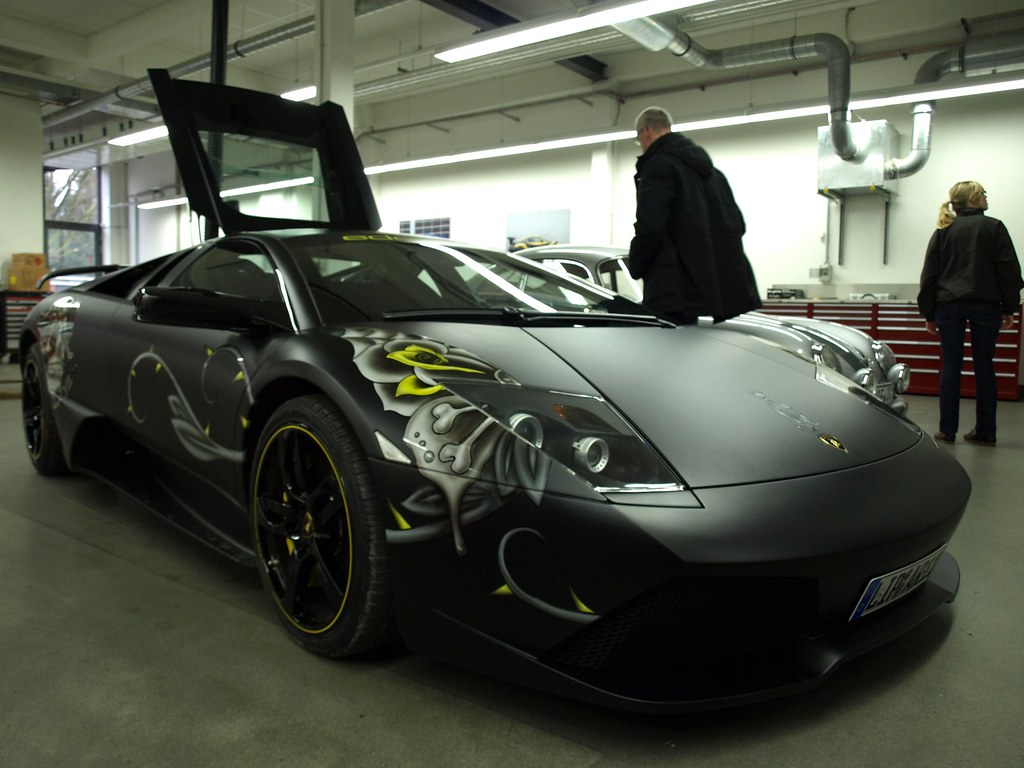
3. **Audi A6**The Audi A6 epitomizes sleek design, refined comfort, and advanced technology, making it a highly desirable vehicle on the used market. Yet, these very qualities, which define its appeal, are precisely what render it remarkably expensive to own in the long run. Used A6 models, particularly those that have crossed the 60,000-mile mark, often begin to reveal their true cost of ownership through a cascade of failing sensors, intricate engine problems, and complex repair procedures. It is a vehicle that demands constant, meticulous attention, and virtually every repair seems to carry a significant premium, challenging the wallet of its owner.
A foundational element of Audi’s appeal, its renowned Quattro all-wheel-drive system, while enhancing stability and driving confidence, significantly increases the complexity and potential cost of maintenance. When key components within this sophisticated system—such as the center differential or the driveshafts—begin to show signs of wear, replacements can easily run between $2,000 and $3,000. Even more routine maintenance tasks, like CV joint replacements or transmission fluid changes, incur higher costs due to the specialized equipment, specific fluid types, and increased labor time required. In many instances, what might be a straightforward fix on a simpler vehicle, such as a leaking seal, can quickly turn into an extensive, full-day job on an Audi A6.
Audi’s engines, particularly the 3.0L supercharged V6 and the 2.0L turbocharged four-cylinder, are known for specific, high-cost issues that arise with age. The 2.0T engine, for instance, is frequently reported to suffer from excessive oil consumption problems, premature PCV valve failures, and critical timing chain tensioner issues. If these problems are left unaddressed for too long, they can necessitate extensive engine-out service, leading to exorbitant repair bills. The 3.0L V6, while offering more power, has its own well-documented issues with the timing chain, which is unfortunately located at the back of the engine. This placement makes even routine inspection or service a highly labor-intensive and costly affair.
The sophisticated electronic systems within the Audi A6 present another major area of financial vulnerability. Audi’s Multi Media Interface (MMI) is a highly advanced system encompassing navigation, smartphone integration, and comprehensive vehicle diagnostics. However, when any part of this complex system fails—whether it’s the display screen, the central control knob, or a faulty electronic module—the repair can easily cost hundreds, or even thousands, of dollars. Adding to this are potential problems with the climate control system, parking sensors, adaptive cruise control, and lane departure systems, which can lead to a consistent stream of repair bills every few months.
Interior components of the Audi A6, despite its luxury positioning, often do not age with the grace one might expect. Commonly reported issues include peeling buttons on the console, clogged sunroof drains leading to water ingress, and malfunctioning window regulators. Individually, these may seem like minor inconveniences, but collectively, they contribute to substantial expenses, especially when each visit to the repair shop involves premium parts pricing and extended labor hours. Owners frequently report annual maintenance costs ranging from $1,500 to $3,000, even when diligent preventive care is undertaken, underscoring the demanding nature of A6 ownership.
Despite the undeniable luxury, sophisticated performance, and prestige that the Audi A6 offers, the total cost per mile over several years of ownership can rival that of far more exotic and seemingly expensive vehicles. Many A6 owners fall into the common trap of believing that German engineering equates to an indestructible vehicle, only to realize, often too late, that it instead implies a level of mechanical and electrical complexity that almost requires an engineering degree simply to comprehend the required repairs. Unless one possesses ample financial resources or has a dedicated, Audi-specialized mechanic on speed dial, a used A6 can very quickly transform into a significant and ongoing financial liability.
Car Model Information: 2015 Audi A6 2.0T Premium Plus
Name: Audi A6
Caption: 2025 Audi A6 Avant (C9)
Manufacturer: Audi AG
Production: 1994–present,2000–present (China)
Class: Executive car
BodyStyle: Sedan (car)
Layout: longitudinal engine,FF layout
Sp: uk
Predecessor: Audi 100
Categories: 2000s cars, 2010s cars, 2020s cars, All-wheel-drive vehicles, All articles to be expanded
Summary: The Audi A6 is an executive car manufactured by the German company Audi since 1994. Now in its sixth generation, the successor to the Audi 100 is manufactured in Neckarsulm, Germany, and is available in saloon and estate configurations, the latter marketed by Audi as the Avant. Audi’s internal numbering treats the A6 as a continuation of the Audi 100 lineage, with the initial A6 designated as a member of the C4-series, followed by the C5, C6, C7, C8 and the C9. The related Audi A7 is essentially a Sportback (liftback) version of the C7-series and C8-series A6 but is marketed under its own separate identity and model designation.
All generations of the A6 have offered either front-wheel-drive or Torsen-based four-wheel-drive, marketed by Audi as their quattro system. The A6 has also been used as the basis for the company’s Allroad models since 1999.
Get more information about: Audi A6
Buying a high-performing used car >>>
Brand: Audi Model: A6
Price: $11,486 Mileage: 93,879 mi.
Read more about: Remembering 12 Brilliant Actors We Lost Too Soon: Their Enduring Legacies and Unfinished Stories
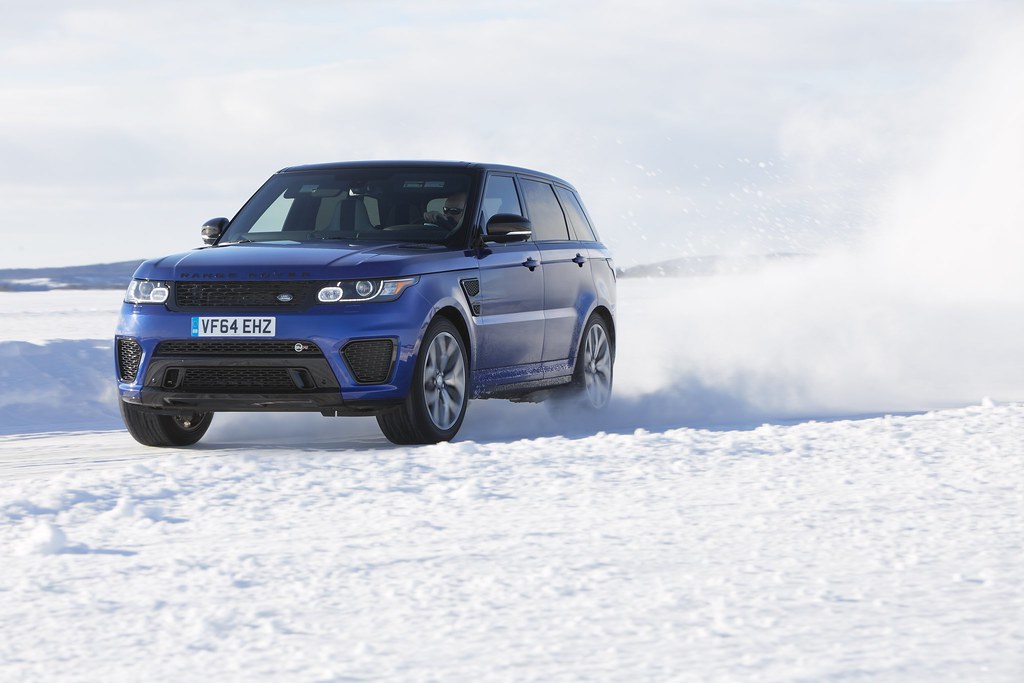
4. **Land Rover Range Rover**Few vehicles on the road project an image of status and capability quite like the Land Rover Range Rover. It’s a vehicle synonymous with luxury, prestige, and rugged elegance. However, lurking behind this impressive façade is a long-standing and well-earned reputation for unreliability and frankly, astronomical maintenance costs. For many in automotive circles, buying a used Range Rover, especially one that has clocked over 60,000 miles, is less like purchasing a car and more like signing up for an open-ended, luxury subscription that comes with no end date and a never-ending stream of bills.
One of the most notorious and financially draining systems in a used Range Rover is its complex air suspension. While this system delivers that signature plush ride and offers impressive off-road flexibility, it is also one of the most failure-prone components. When an air strut inevitably decides to give up—and owners will often tell you it’s a matter of when, not if—replacement costs can easily range from $1,500 to $2,500 per corner. To add insult to injury, the compressor, air lines, and ride height sensors are also prone to failing independently, each adding more zeros to the repair tally. Some owners, pushed to their limit, eventually resort to converting the system to more traditional coil springs, which admittedly resolves the reliability headache but sacrifices the Range Rover’s unique ride quality.
Then there’s the electronic system, which many used Range Rover owners describe as an absolute nightmare. The infotainment system, for instance, is frequently reported to be sluggish and prone to bugs, while navigation systems have a knack for crashing at the most inconvenient times. Backup cameras can spontaneously stop working, and random, mysterious warning lights often illuminate the dashboard for no clear reason, adding to the owner’s anxiety. Diagnosing these intricate electrical issues typically demands specialized dealership tools and software updates that can cost hundreds of dollars just for the initial scan—before any parts are even considered for replacement. Replacing a faulty touchscreen alone can set an owner back upwards of $1,200.
Under the hood, the engines and transmissions in used Range Rovers also raise significant red flags. Older V8 engines have well-documented timing chain and cooling system issues that can lead to major overhauls. On newer models, the turbocharged engines can suffer from premature failures, which often translates into repair bills easily exceeding $4,000. The supercharged variants, while exhilarating, are particularly costly to maintain due to their inherent heat management issues and the incredibly tight packaging within the engine bay, making simple repairs complicated and expensive. Should the engine face a catastrophic failure, a complete replacement can cost $10,000 or even more, a figure that often surpasses the actual market value of the used vehicle.
Beyond the major component failures, the daily operational costs are equally alarming. Fuel economy is abysmal across the entire Range Rover lineup, with average mileage often hovering in the dismal 13–17 mpg range. This means owners will be spending a small fortune at the pump, especially since the vehicle unequivocally demands premium-grade gasoline. Furthermore, the vehicle’s substantial weight and its use of performance-oriented tires accelerate tire wear, and a full set of replacements can easily run over $1,000. When you factor in sky-high insurance costs (a consequence of expensive repairs and a higher theft risk), rapid depreciation, and the limited pool of independent mechanics with the expertise—or willingness—to work on these complex machines, you’re undeniably looking at one of the most expensive ownership experiences available on the market. While a Range Rover offers undeniable luxury, capability, and prestige, the cost of keeping one reliably on the road frequently rivals that of high-end sports cars. Unless you genuinely require its robust off-road prowess or have a substantial, dedicated repair fund readily available, a used Range Rover is unequivocally a high-risk purchase that can quickly transform into a profound financial black hole.
Car Model Information: 2013 GMC Sierra 1500 SLT
Logo: Range Rover logo.svg
Caption: 2022 Range Rover SE P440e (L460, fifth generation, United Kingdom)
Aka: Range Rover Vogue (1981–2022),Range Rover Autobiography (1994–present)
Name: Range Rover
Manufacturer: ubl
Production: 1969–present
Assembly: Solihull
Class: Mid-size luxury car,SUV
Layout: Front-engine, four-wheel-drive layout
Sp: uk
Categories: 1980s cars, 1990s cars, 2000s cars, 2010s cars, 2020s cars
Summary: The Land Rover Range Rover, generally shortened to Range Rover, is a 4WD luxury mid to full size crossover marque and sub-brand of Jaguar Land Rover, owned by India-based Tata Motors. The Range Rover line was launched in 1970 by British Leyland and since 2022 is in its fifth generation.
Additional models have been launched under the Range Rover name, including the Range Rover Sport, Range Rover Evoque, and Range Rover Velar.
Get more information about: Range Rover
Buying a high-performing used car >>>
Brand: Land Rover Model: Range Rover
Price: $17,900 Mileage: 106,960 mi.
Read more about: Patrick Hemingway: A Life Beyond His Father’s Shadow, Stewardship, and Adventure Across Continents
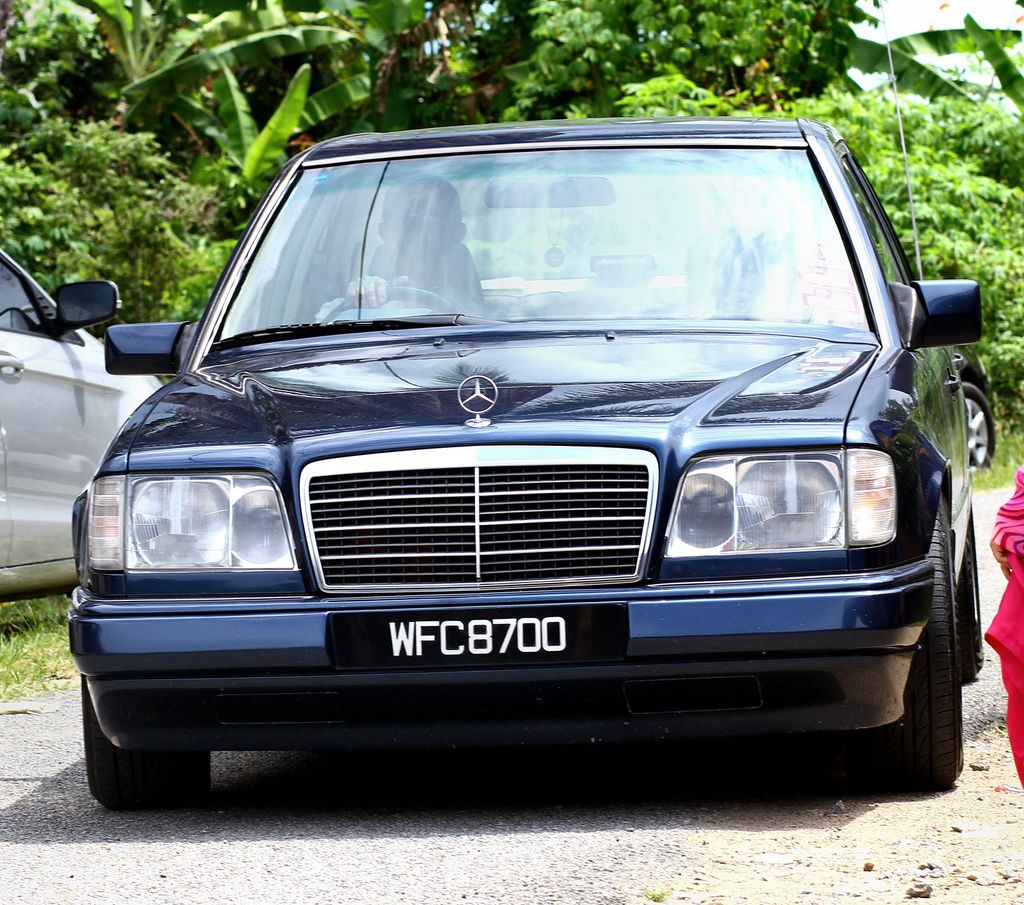
5. **Mercedes-Benz E-Class**The Mercedes-Benz E-Class holds a revered place in automotive history as one of the most iconic luxury sedans. It’s celebrated for its seamless blend of comfort, sophisticated engineering, and refined performance, all packaged in an elegantly understated design. However, the allure of a used E-Class can quickly fade into financial dread once the original factory warranty breathes its last. While it may exude elegance and promise a premium driving experience, this vehicle consistently proves to be one of the most expensive used cars to maintain, demanding a level of care—and corresponding financial investment—that many owners struggle to keep up with.
At the very heart of the E-Class’s long-term cost problem is Mercedes’ engineering philosophy itself: an unwavering commitment to precision and complexity. This approach undoubtedly crafts an exceptional new car experience, but it also significantly inflates repair costs as the vehicle ages. Common mechanical issues that plague older E-Class models include failures of the sophisticated air suspension system, particularly in variants equipped with AIRMATIC. Owners frequently encounter oil leaks stemming from valve cover gaskets or timing chain covers, and electronic throttle body failures are also a recurrent theme. Each of these specific issues can easily rack up repair costs exceeding $1,000, and many necessitate intricate diagnostic work just to pinpoint the exact problem.
One particularly notorious issue that has haunted older E-Class models, especially those from the W211 and early W212 platforms, is the Sensotronic Brake Control (SBC) system. This advanced “brake-by-wire” technology was cutting-edge for its time, but it has proven to be both costly and inherently unreliable in the long run. When the SBC system fails—which, unfortunately, it often does after accumulating around 70,000 miles—the replacement can easily cost upwards of $2,500. This substantial expense is frequently compounded by other age-related issues such as worn-out suspension components, deteriorating motor mounts, and myriad complex electrical systems, which collectively present a never-ending to-do list for the service shop.
Electrical systems, in general, are particularly prone to failure in used E-Class models. The COMAND infotainment system, a central hub for many vehicle functions, can frustratingly freeze or go completely black, often requiring expensive replacement screens or control modules to restore functionality. Power window regulators frequently fail, and the keyless entry systems (Keyless-Go) are known to become glitchy or entirely non-functional over time. Diagnosing these intricate electrical faults almost invariably requires specialized dealership-level tools, and the labor costs at Mercedes-certified shops tend to be on the higher end of the spectrum, adding another layer of expense to the ownership experience.
Many E-Class models are equipped with turbocharged or supercharged engines, which can become temperamental and prone to specific issues as they age. Coolant leaks are not uncommon, failed intercoolers are a recognized problem, and higher-than-average oil consumption can be a concern. In some models, critical oil cooler seals or timing chain guides can become a major issue after 100,000 miles, requiring engine teardown-level service to rectify. These kinds of extensive jobs often exceed $3,000–$5,000 and are often too complex for independent mechanics to comfortably or effectively handle, further narrowing repair options and driving up costs. The cumulative effect of these precision-engineered, yet fragile, systems can quickly become overwhelming for the average owner. The E-Class also demands “premium spec” tires, brakes, and fluids, meaning even routine maintenance translates into significantly higher costs. It requires expensive synthetic oil, specific transmission fluid, and often OEM-only filters. While some DIY maintenance is possible for mechanically inclined owners, the parts alone can be two to three times more expensive than for a comparable Japanese or Korean vehicle, negating much of the potential savings. For all its undeniable luxury, superb interiors, and inherent prestige, the long-term ownership cost of a used Mercedes-Benz E-Class can be truly staggering. It stands as a classic example of “you get what you pay for”—and in some cases, much more than you bargained for. Unless you are prepared to approach this vehicle as a high-end investment with a dedicated budget for its upkeep, it might be far wiser to simply admire its beauty from a comfortable distance.
Read more about: 11 Iconic Classics: Your Ultimate Guide to Restoring Affordable Dreams Instead of Buying Them
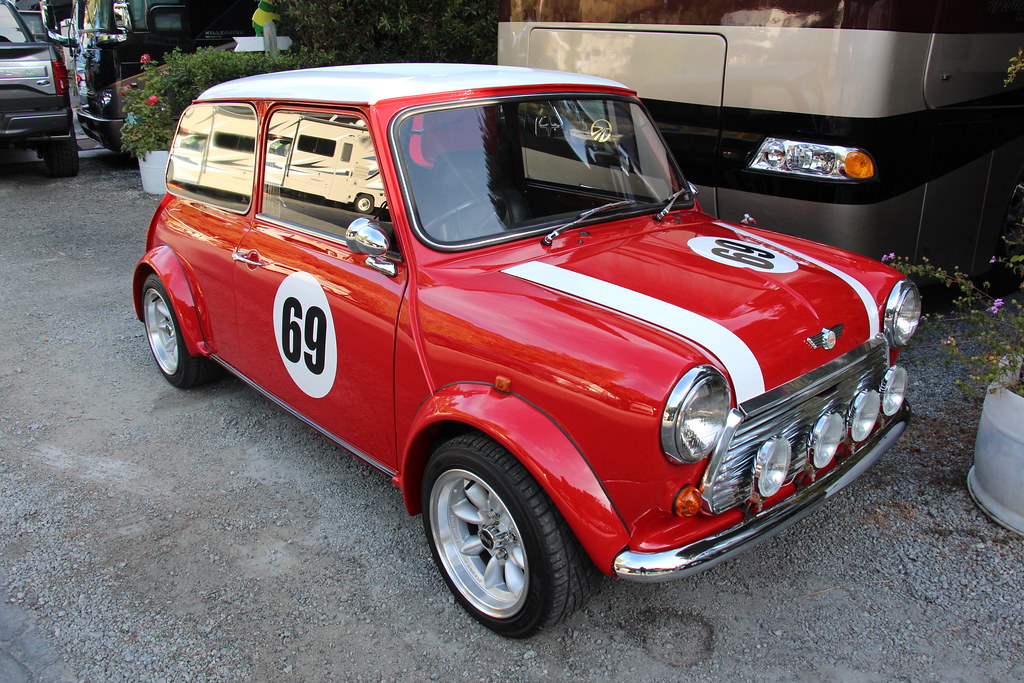
6. **Mini Cooper**The Mini Cooper, with its distinctive styling, go-kart-like handling, and quirky personality, has always held a special place in the hearts of drivers who appreciate a fun-to-drive car. Its compact size and relatively lower initial purchase price on the used market often lead unsuspecting buyers to believe it’s a budget-friendly option. However, real-world ownership of a used Mini Cooper frequently tells a dramatically different story. From persistent engine issues to frustrating electrical gremlins and devastating transmission failures, the Mini’s undeniable charm can wear off astonishingly quickly once the repair bills start to pile up, transforming an enjoyable ride into a significant financial burden.
One of the most widely reported and costly issues plaguing Mini Coopers, particularly those manufactured between 2007 and 2013, centers around the timing chain tensioner. This critical component often fails prematurely, leading to a loud, ominous rattling noise emanating from the engine. If this warning sign is ignored, it can rapidly escalate to catastrophic engine damage, turning a relatively minor issue into an engine-destroying disaster. Replacing the timing chain on a Mini is neither a simple nor an inexpensive job; it typically ranges between $1,200 and $2,000 due to the labor-intensive work required in a very tightly packed engine bay, often requiring specialized tools and considerable expertise.
Another frequent and recurring problem area for Mini Coopers lies within their cooling system. These vehicles are notoriously known for premature water pump failures, cracks in the thermostat housing, and persistent coolant leaks. Each of these individual issues might not be catastrophic on its own, but they frequently occur in combination, leading to chronic overheating problems and repeated, expensive trips to the mechanic. Replacing the water pump alone can easily cost anywhere from $700 to $1,000, and addressing cracks in the thermostat housing is a labor-intensive endeavor due to its often difficult-to-access location, compounding the repair expenses.
Transmission woes also represent a significant financial vulnerability for used Mini Coopers, particularly those equipped with the Continuously Variable Transmission (CVT) found in many early automatic models. These CVT units have gained a notorious reputation for failing around the 80,000 to 100,000-mile mark. The problem is exacerbated by the fact that these transmissions are often not serviceable, meaning that a full replacement is the only viable solution when they fail. The cost for a complete transmission replacement can be devastating, frequently ranging from $4,000 to $7,000 or even more, a figure that can easily exceed the entire market value of the used car, leaving owners in a difficult financial predicament and questioning their purchase decision. The initial fun factor quickly diminishes when faced with such an astronomical repair bill.
Beyond these major mechanical headaches, Mini Coopers tend to suffer from a variety of smaller, yet still costly, electrical gremlins, such as malfunctioning window switches, power steering pump failures (on older models), and various sensor-related issues that trigger persistent check engine lights. Parts, given their BMW parentage, are often more expensive than for comparable small cars, and labor rates tend to be higher due to the specialized knowledge required. While the Mini Cooper offers a truly engaging driving experience and undeniable style, its deceptively high repair costs make it a precarious choice in the used car market. Unless you’re prepared for frequent and expensive trips to the shop, its charm may quickly give way to considerable regret.
### The True Cost: More Than Just the Sticker Price
As we’ve explored through these various models, the allure of a seemingly affordable used car can mask a far more complex and costly reality. Whether it’s the sophisticated engineering of a luxury sedan, the off-road prowess of a prestigious SUV, or the nimble fun of a quirky compact, each vehicle comes with its own set of potential financial traps once it leaves the dealership lot. The true measure of a used car’s value extends far beyond its initial purchase price; it lies in the ongoing, often unpredictable, expenses that accrue over years of ownership. Understanding the nuances of repair costs, maintenance requirements, and the specific vulnerabilities of different makes and models is paramount.
Car Model Information: 2024 MINI Hardtop Cooper S
Sp: uk
Caption: 1959 Morris Mini-Minor (first one built)
Name: Mini
Aka: Austin 850,Rover Mini,Austin Cooper,Austin Mini,Austin Partner,Austin Seven,Innocenti Mini,Leyland Mini,Morris 850,Morris Mascot,Morris Mini Minor,Riley Elf,Wolseley 1000 (South Africa),Wolseley Hornet
Layout: Front-engine, front-wheel-drive layout
Manufacturer: British Motor Corporation,British Leyland,Rover Group
Production: 1959–2000 (5.38 million)
Class: City car
BodyStyle: sedan (car),convertible,Station wagon,sedan delivery,coupe utility
Engine: BMC A-series engine,Straight-four engine
Designer: Alec Issigonis,John Sheppard (car designer)
Transmission: 4-speed manual,AP automatic transmission,5-speed manual (optional extra on some later models)
Length: cvt,cvt,cvt
Width: cvt
Height: cvt
Weight: cvt
Wheelbase: cvt,cvt
Related: Mini Moke,Austin Metro,Innocenti Mini,Mini Wildgoose,Mini Marcos
Successor: Austin Metro,Mini Hatch
Assembly: Panmure, New Zealand
Categories: 1960s cars, 1970s cars, 1980s cars, 1990s cars, 2000s cars
Summary: The Mini is a very small two-door, four-seat car, produced for four decades over a single generation, with many names and variants, by the British Motor Corporation (BMC) and its successors British Leyland and the Rover Group, and finally (briefly) under BMW ownership. Minis were built as fastbacks, estates, convertibles, and various other body styles. Minus a brief 1990s hiatus, from 1959 into 2000, an estimated 5.38 million of all variations combined were built, and the Mini’s engines also powered another 2 million Mini Metros, though the Mini eventually outlasted its successor.
Initially, the Mini was marketed under the Austin and Morris names, as the Austin Seven and Morris Mini-Minor; the Austin Seven was renamed Austin Mini in 1962 and Mini became a marque in its own right in 1969. Retrospectively, the car is known as the “Classic Mini” to distinguish it from the modern MINI family of vehicles produced since 2001 by German carmaker BMW, who took ownership of the Mini name following the sale of Rover Group in 2000.
This distinctive two-door car was designed for BMC by Sir Alec Issigonis. Its space-saving transverse engine and front-wheel drive layout – allowing 80% of the area of the car’s floorpan to be used for passengers and luggage – influenced a generation of car makers. The front-wheel-drive, transverse-engine layout were used in many other “supermini” style car designs such as Honda N360 (1967), Nissan Cherry (1970), and Fiat 127 (1971). The layout was also adapted for larger subcompact designs. In 1999, the Mini was voted the second-most influential car of the 20th century, behind the Ford Model T, and ahead of the Citroën DS and Volkswagen Beetle. It is also considered an icon of 1960s British popular culture.
The Mini Mark I had three major UK updates: the Mark II, the Clubman, and the Mark III. Within these was a series of variations, including an estate car, a pick-up, a van, and the Mini Moke, a jeep-like buggy. The performance versions, the Mini Cooper and Cooper “S”, were successful as both race and rally cars, winning the Monte Carlo Rally in 1964, 1965, and 1967. The Mini was manufactured in England at the Longbridge plant in Birmingham located next to BMC’s headquarters and at the former Morris Motors plant at Cowley, as well as in Australia (Victoria Park/Zetland BMC Australia factory) and later also in Spain (Authi), Belgium, Italy (Innocenti, as the Innocenti Mini), Chile, Malta, Portugal, South Africa, Uruguay, Venezuela, and Yugoslavia (IMV). In 1980, British Leyland launched the Mini’s follow-up, the Austin Metro, however the Mini outlasted it and continued to be produced at Longbridge until October 2000.
Get more information about: Mini
Buying a high-performing used car >>>
Brand: Mini Model: Cooper
Price: $25,499 Mileage: 10,501 mi.
Read more about: Lady Gaga’s Unstoppable Style Saga: From Provocative Pop Icon to Oscar-Winning Luminary, A Deep Dive into Her Epic Fashion Evolution
Armed with this knowledge, prospective buyers can move past the superficial appeal and delve into the deeper financial implications. The goal isn’t to demonize specific brands or types of vehicles, but rather to empower you, the consumer, to make informed choices that align with your budget and long-term financial health. By meticulously researching a vehicle’s reliability record and typical repair costs—and perhaps getting that pre-purchase inspection from a trusted mechanic—you can transform what might otherwise be a source of regret into a truly smart and satisfying investment. Drive smart, not just for the thrill of the ride, but for the peace of mind that comes with a car that truly serves your wallet as well as your needs.


